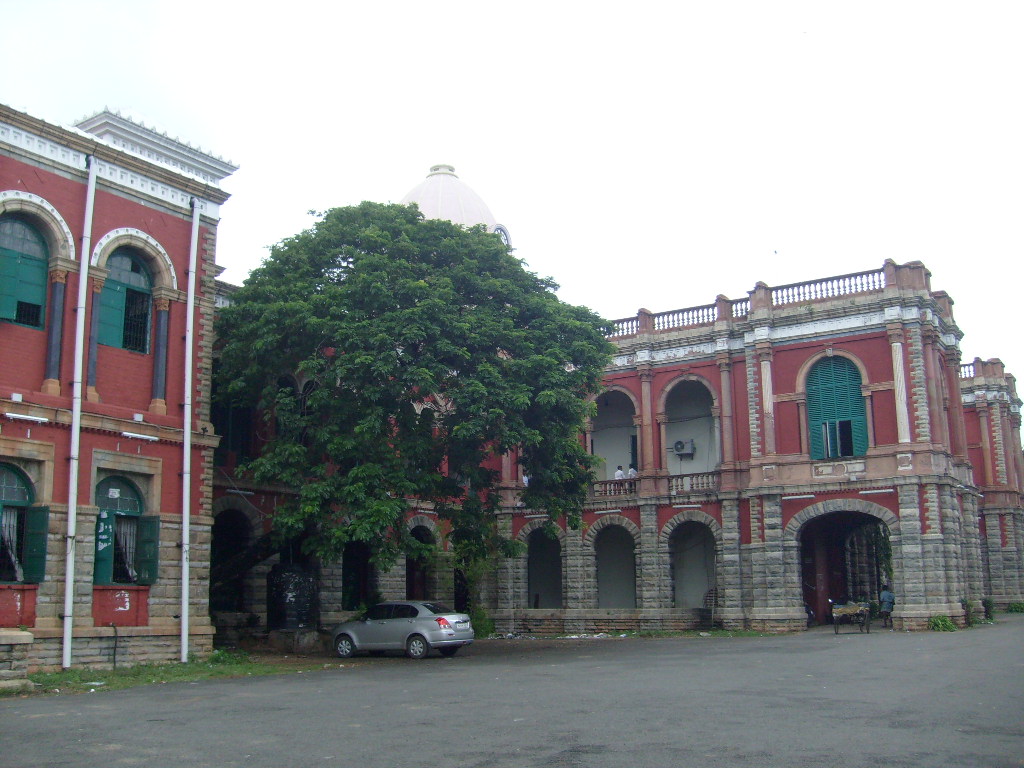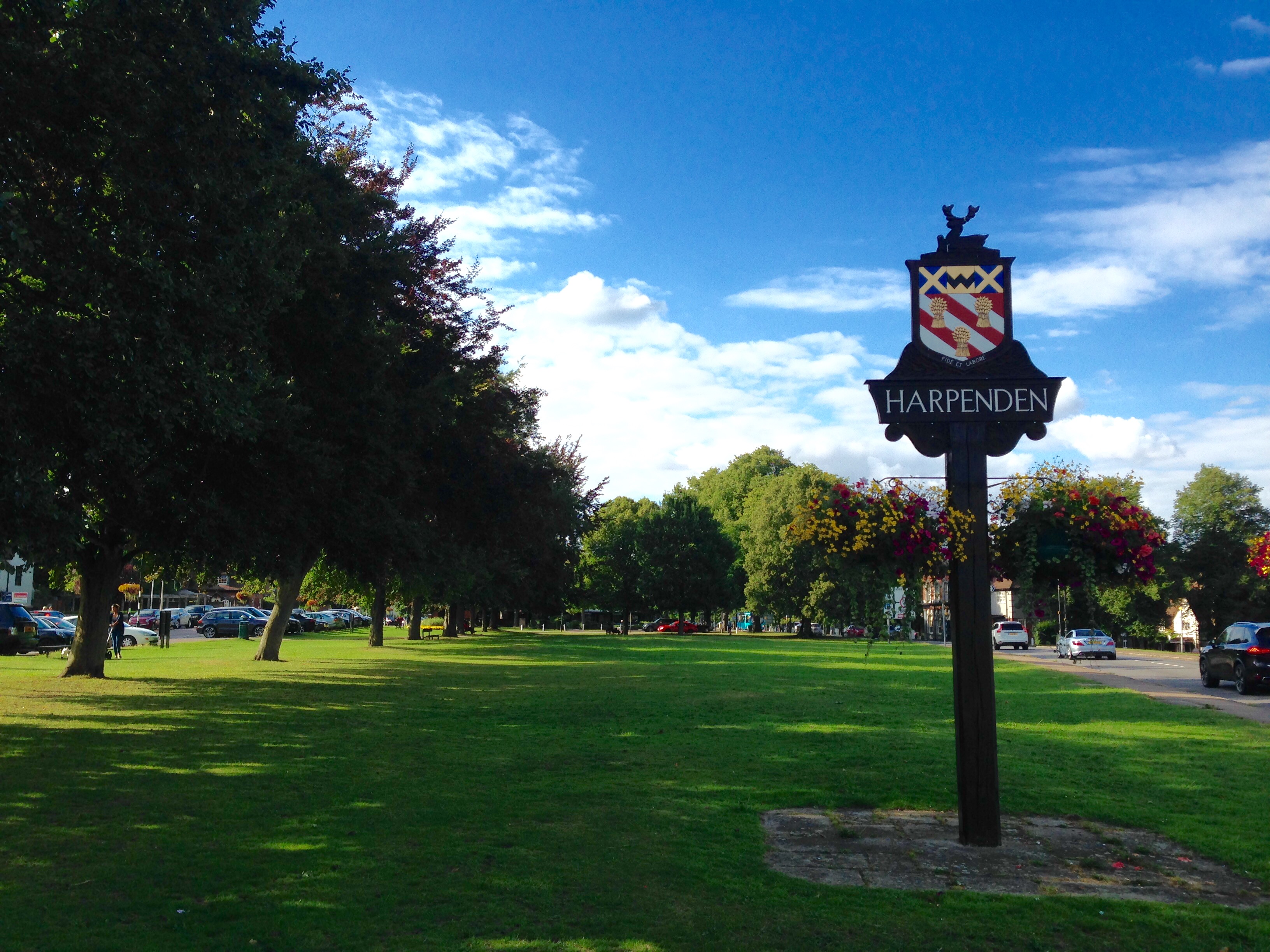|
Toppur Seethapathy Sadasivan
Toppur Seethapathy Sadasivan (May 22, 1913 – August 18, 2001) was an Indian plant pathologist, academic and the director of the ''Centre for Advanced Studies in Botany'' of the University of Madras. He was the founder of the ''School of Physiological Plant Pathology'' at Madras University and was a recipient of the Shanti Swarup Bhatnagar Prize, the highest Indian award in the science category. He was an elected fellow of the Indian Academy of Sciences, Indian National Science Academy and Indian Botanical Society and an elected member of the Academy of Sciences Leopoldina. The Government of India awarded him the third highest civilian honour of the Padma Bhushan, in 1974, for his contributions to science. Biography Toppur Sadasivan was born on 22 May 1913, at Saidapet, a satellite town in Madras, Madras Presidency, to Kanakammal and her physician husband, Seethapathy, who was the first Indian director of the King Institute of Preventive Medicine and Research. His schooling w ... [...More Info...] [...Related Items...] OR: [Wikipedia] [Google] [Baidu] |
Saidapet
Saidapet, also known as Saidai, is a neighbourhood in Chennai, India, situated in the northern banks of the Adyar River and serves as an entry point to Central Chennai. It is surrounded by West Mambalam in the North, C.I.T Nagar in the North-East, Nandanam in the East, Guindy in the South, Jafferkhanpet and Ashok Nagar in the North-West. The Saidapet Court, the only other court of judicature in Chennai city apart from the Madras High Court, and the Saidapet bus depot are located here. Prior to its incorporation in Madras city, Saidapet functioned as the administrative headquarters of Chingleput district. The neighbourhood is served by Saidapet railway station of the Chennai Suburban Railway Network. Saidapet was occupied by the British East India Company and was made the administrative headquarters of Chingleput district. The health district in Chengalpet district is split into Saidapet hud and Kanchipuram hud. Panagal building which is a part of Saidapet is a famous landmark ... [...More Info...] [...Related Items...] OR: [Wikipedia] [Google] [Baidu] |
King Institute Of Preventive Medicine And Research
King Institute of Preventive Medicine and Research is a medicine research institute located in Guindy, Chennai, India. It was established on 7 November 1899 with the aim of protecting against scourging infections and was named after Lt. Col. W. G. King, the then Sanitary Commissioner of the Madras Presidency. The institute is located on the banks of Adyar River. The main red building that houses the Director's office has been identified as a heritage structure and has been brought under Indian Archaeological Society. The institute functions under Director of Medical Education and Department of Health and Family Welfare (Tamil Nadu). It was one of the major institutions in India responsible for eradicating small pox by the production of vaccine. It is also one of the referral centers for bacterial and viral diseases in Tamil Nadu. Various wings at the institute include International Vaccination Centre, Board of Paramedical Education, and school of laboratory technology. Activit ... [...More Info...] [...Related Items...] OR: [Wikipedia] [Google] [Baidu] |
Pathogens
In biology, a pathogen ( el, πάθος, "suffering", "passion" and , "producer of") in the oldest and broadest sense, is any organism or agent that can produce disease. A pathogen may also be referred to as an infectious agent, or simply a germ. The term ''pathogen'' came into use in the 1880s. Typically, the term ''pathogen'' is used to describe an ''infectious'' microorganism or agent, such as a virus, bacterium, protozoan, prion, viroid, or fungus. Small animals, such as helminths and insects, can also cause or transmit disease. However, these animals are usually referred to as parasites rather than pathogens. The scientific study of microscopic organisms, including microscopic pathogenic organisms, is called microbiology, while parasitology refers to the scientific study of parasites and the organisms that host them. There are several pathways through which pathogens can invade a host. The principal pathways have different episodic time frames, but soil has the longest ... [...More Info...] [...Related Items...] OR: [Wikipedia] [Google] [Baidu] |
Pigeonpea
The pigeon pea (''Cajanus cajan'') is a perennial legume from the family Fabaceae native to the Old World. The pigeon pea is widely cultivated in tropical and semitropical regions around the world, being commonly consumed in South Asia, Southeast Asia, Africa, Latin America and the Caribbean. Etymology and other names Scientific epithet The scientific name for the genus ''Cajanus'' and the species ''cajan'' derive from the Malay word ''katjang'' meaning legume in reference to the bean of the plant. Common English names In English they are commonly referred to as pigeon pea which originates from the historical utilization of the pulse as pigeon fodder in Barbados. The term Congo pea and Angola pea developed due to the presence of its cultivation in Africa and the association of its utilization with those of African descent. The names no-eye pea and red gram both refer to the characteristics of the seed, with no-eye pea in reference to the lack of a hilum on most varieties ... [...More Info...] [...Related Items...] OR: [Wikipedia] [Google] [Baidu] |
Cash Crops
A cash crop or profit crop is an agricultural crop which is grown to sell for profit. It is typically purchased by parties separate from a farm. The term is used to differentiate marketed crops from staple crop (or "subsistence crop") in subsistence agriculture, which are those fed to the producer's own livestock or grown as food for the producer's family. In earlier times, cash crops were usually only a small (but vital) part of a farm's total yield, while today, especially in developed countries and among smallholders almost all crops are mainly grown for revenue. In the least developed countries, cash crops are usually crops which attract demand in more developed nations, and hence have some export value. Prices for major cash crops are set in international trade markets with global scope, with some local variation (termed as "basis") based on freight costs and local supply and demand balance. A consequence of this is that a nation, region, or individual producer relying o ... [...More Info...] [...Related Items...] OR: [Wikipedia] [Google] [Baidu] |
University Of Agriculture (Faisalabad)
The University of Agriculture (UAF) is a public research university in Faisalabad, Pakistan. History Origins The University of Agriculture, Faisalabad (Urdu: ), (formerly: ''Punjab Agricultural College and Research Institute''), is a university in the city of Faisalabad, Punjab, Pakistan. It was established in 1906Faculty of Agriculture - History of the University of Agriculture, Faisalabad Retrieved 22 June 2022 as the first major institution of higher agricultural education in the undivided Punjab. In 2009, the Vice Chancellor of the university said: "Ours is the first agriculture university of the subcontinent so we are the trendsetters in this regard and h ... [...More Info...] [...Related Items...] OR: [Wikipedia] [Google] [Baidu] |
Lyallpur
Faisalabad (; Punjabi/ ur, , ; ), formerly known as Lyallpur ( Punjabi, Urdu: لائل پور), named after the founder of the city, but was renamed in 1977 in honour of late King Faisal of Saudi Arabia. It is the 3rd largest city of Pakistan after Karachi and Lahore respectively, and the 2nd largest city of Punjab after Lahore. Faisalabad is one of Pakistan's wealthiest cities, the largest industrial hub and 2nd largest city of wider Punjab region. Historically one of the first planned cities within British India, it has long since developed into a cosmopolitan metropolis. Faisalabad was restructured into city district status; a devolution promulgated by the 2001 local government ordinance (LGO). The total area of Faisalabad District is while the area controlled by the Faisalabad Development Authority (FDA) is . Faisalabad has grown to become a major industrial and distribution centre because of its central location in the region and connecting roads, rails, and air ... [...More Info...] [...Related Items...] OR: [Wikipedia] [Google] [Baidu] |
Harpenden
Harpenden () is a town and civil parish in the City and District of St Albans in the county of Hertfordshire, England. The population of the built-up area was 30,240 in the 2011 census, whilst the population of the civil parish was 29,448. Harpenden is a commuter town, with a direct rail connection through Central London and property prices well over triple the national average. History There is evidence of pre-Roman Belgic farmers in the area. In 1867 several items were found including a bronze escutcheon, rams-head shaped mounts, and a bronze bowl. There are Roman remains in land around Harpenden, for instance the site of a mausoleum in the park at Rothamsted. A tumulus near the river Lea was opened in the 1820s and it contained a stone sarcophagus of Romano-Celtic origin. Five objects dating from around 150 AD, were inside including a glass jug with a Mediterranean stamp and samian ware dishes used for libations. Up to the 13th century the area of the parish cons ... [...More Info...] [...Related Items...] OR: [Wikipedia] [Google] [Baidu] |
Rothamsted Research
Rothamsted Research, previously known as the Rothamsted Experimental Station and then the Institute of Arable Crops Research, is one of the oldest agricultural research institutions in the world, having been founded in 1843. It is located at Harpenden in the English county of Hertfordshire and is a registered charity under English law. One of the station's best known and longest-running experiments is the Park Grass Experiment, a biological study that started in 1856 and has been continuously monitored ever since. History The Rothamsted Experimental Station was founded in 1843 by John Bennet Lawes, a noted Victorian era entrepreneur and scientist who had founded one of the first artificial fertilizer manufacturing factories in 1842, on his 16th-century estate, Rothamsted Manor, to investigate the impact of inorganic and organic fertilizers on crop yield. Lawes had Henry King conduct studies on the application of bone dust to turnip fields between 1836 and 1838. In 1840 he h ... [...More Info...] [...Related Items...] OR: [Wikipedia] [Google] [Baidu] |
University Of London
The University of London (UoL; abbreviated as Lond or more rarely Londin in post-nominals) is a federal public research university located in London, England, United Kingdom. The university was established by royal charter in 1836 as a degree-awarding examination board for students holding certificates from University College London and King's College London and "other such other Institutions, corporate or unincorporated, as shall be established for the purpose of Education, whether within the Metropolis or elsewhere within our United Kingdom". This fact allows it to be one of three institutions to claim the title of the third-oldest university in England, and moved to a federal structure in 1900. It is now incorporated by its fourth (1863) royal charter and governed by the University of London Act 2018. It was the first university in the United Kingdom to introduce examinations for women in 1869 and, a decade later, the first to admit women to degrees. In 1913, it appointe ... [...More Info...] [...Related Items...] OR: [Wikipedia] [Google] [Baidu] |
Paleobotanist
Paleobotany, which is also spelled as palaeobotany, is the branch of botany dealing with the recovery and identification of plant remains from geological contexts, and their use for the biological reconstruction of past environments (paleogeography), and the evolutionary history of plants, with a bearing upon the evolution of life in general. A synonym is paleophytology. It is a component of paleontology and paleobiology. The prefix ''palaeo-'' means "ancient, old", and is derived from the Greek adjective , . Paleobotany includes the study of terrestrial plant fossils, as well as the study of prehistoric marine photoautotrophs, such as photosynthetic algae, seaweeds or kelp. A closely related field is palynology, which is the study of fossilized and extant spores and pollen. Paleobotany is important in the reconstruction of ancient ecological systems and climate, known as paleoecology and paleoclimatology respectively; and is fundamental to the study of green plant developm ... [...More Info...] [...Related Items...] OR: [Wikipedia] [Google] [Baidu] |
Birbal Sahni
Birbal Sahni Royal Society, FRS (14 November 1891 – 10 April 1949) was an Indian paleobotanist who studied the fossils of the Indian subcontinent. He also took an interest in geology and archaeology. He founded what is now the Birbal Sahni Institute of Palaeobotany at Lucknow in 1946. His major contributions were in the study of the fossil plants of India and in plant evolution. He was also involved in the establishment of Indian science education and served as the President of the National Academy of Sciences, India and as an Honorary President of the International Botanical Congress, Stockholm. Formative years Birbal Sahni was born in Bhera, Shahpur, Pakistan, Shahpur District, in today's Pakistani Punjab, on 14 November 1891. He was the third child of Ishwar Devi and the pioneer Indian meteorologist and scientist Lala Ruchi Ram Sahni who lived in Lahore. The family came from Dera Ismail Khan and they frequently made visits to Bhera which was close to the Salt Range and Khew ... [...More Info...] [...Related Items...] OR: [Wikipedia] [Google] [Baidu] |

.jpeg)








